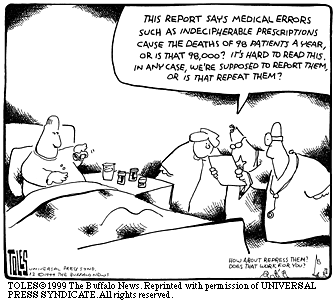Zero Work-Related Injuries: Impossible because of Human Error?
“It was just an accident.” “S/he made a bad judgment.” “S/he behaved unsafely.”
Do any of those causes sound familiar to you? We’ve all heard these or similar reasons for why an injury occurred. However, are they the true root cause? The “cause” for injuries or accidents is typically attributed in some way to “human error”.
In my last blog I asked the question “Is it possible to eliminate work-related injuries?” Your answer to this question is based in part from your experiences in dealing with injuries and belief that human errors can or cannot be eliminated and/or controlled. We’ve all heard the cliché “To err is human”. With this perspective the answer to my question will always be “No” because errors and therefore injuries will always occur. I want you to consider another perspective and that is whether human errors are truly the cause or are they the symptom of the system and environment in which the human acts/reacts. In other words it is a “system error” (the process, procedures, equipment, environment, etc.). The defect in the system is the cause for the human to act or not act in the appropriate manner which resulted in injury.
Consider this example. A construction worker fell two stories down to the ground and suffered serious injuries. The investigation report stated the worker was found wearing a safety harness. Previous to the fall it stated the worker was in a hurry to complete a task and didn’t bother to tie-off his harness. The worker has been in construction for over 8 years and had recently completed the annual safety training. The cause of the fall was that the worker didn’t follow safety procedures. At face value, the reported cause makes sense. The worker obviously didn’t use the safety harness. He should’ve known better, after all he is experienced and just attended the annual training. Given this stated cause what is the corrective action? The worker is the cause, so that is the focus of the corrective action. This may include firing the worker, providing more training or relegating him to working only on the ground.
Investigating an injury with the perspective that the human is not the problem but the symptom of the problem will result in an investigation that is deeper and broader comparatively. The questions to ask will revolve around what led the worker to his action/choice of not using his safety harness. The worker was in a hurry—why? The worker had the harness on but still didn’t tie off—why? The worker was experienced and had recent training so he must have known better but yet didn’t act appropriately—why? The goal is to discover what caused the worker to make the choice he did. Effective, sustainable solutions can only be implemented if a nswers to those questions are found.
nswers to those questions are found.
In order for work-related injuries to be eliminated all of the possible root causes for failure (human error) must be identified and then solutions implemented. Assigning the cause and subsequent solutions on the human will never totally eliminate the risk of that injury happening again to another worker. Relying on good behavior and having employees value safety will decrease injuries to a certain level but behavior training is still a “band-aid” to the problem. Only by drilling down to the true root cause will work-related injuries be eliminated.
What do you think?
